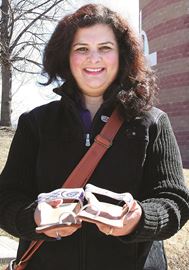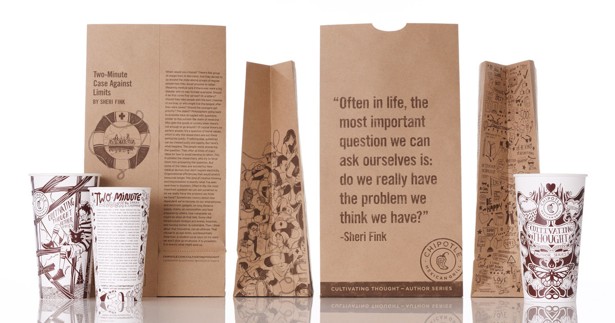The SPACE women are invading Mississauga next week.
On Tuesday they land on the stage of the Noel Ryan Auditorium at Central Library to tell us, in their own words, what it’s like being a creature from outer space, or at least, from outside Canada’s boundaries.
The members of the Shoe Project Alumni Collective Educational are highly-educated, highly-motivated educators, psychologists, scientists, writers and professionals who have been brought together to find their individual voices through the far-sighted work of former Sheridan College teacher and novelist Kathryn Govier.
Through the conceit of telling a story about what they have worn on their feet at various times of their lives, the women develop powerful, evocative expressions of how their homelands and their adopted lands have changed their lives and how their former and current lives reverberate through one another.
Gathered in a circle they tell stories about how they came to be in Canada, shape them into short essays and performance pieces and help themselves, and their receiving Canadian family, figure out what’s going on with this whole intriguing immigrant business.
“It distills your thought process,” says Teenaz Javat, a 46-year-old Churchill Meadows resident who will be one of those presenting the array of song, dance and stories. “It just distills your story through the lens of a shoe. Nobody came to Canada barefoot, These are real shoes and they are our own.”
Javat describes herself as Indian by blood, Pakistani by bond (she moved there after marrying her husband) and Canadian by choice.
Although she’s a writer by profession, who pens the 65-character crawls that snake the bottom of your TV screen as you watch CBC News Network on weekends, the Mumbai native has never written personal memoir before.
Her first story was about the black baby shoes that her then-eight-month-old daughter wore June 22, 1997 when she and her doubting husband first arrived in Canada. The shoes hang on her Christmas tree each year and remind her of the nine years she stayed at home caring for her two children.
Her latest story features a pair of shiny dress sandals known as chappals, covered with “bling” that she bought a couple of years ago on a return visit to India to see her mother, who still clips and saves all the stories her daughter writes as a freelancer for two major newspapers in India.
Titled I Missed the Bus And Survived, it tells the story of how Javat’s dream of becoming a civil servant by attending Nehru University in New Delhi was shattered before it began when her mother refused to let her attend the school after visiting Delhi, which she termed “the thug capital of India.” Her mother turned the cab around even before her university tour was to start.
It was at a bus stop near Nehru University where the infamous bus gang rape took place in 2012.
“She would have worn chappals similar to mine. They look good and are even quite comfortable, But they are no good for running. They would not have helped her escape,” the story ends.
Sitting in a Tim Hortons across the street from the low-rise building at The Collegeway and Glen Erin Dr. where the family lived for five years when they came to Canada, Javat says “I wanted to go to that university so badly and it changed the course of my whole life.”
Different choices were made, choices which introduced her to the joys of pushing a stroller through the snow from The Collegeway to Woodchester Plaza to cash in the beer bottle empties, which gave you $1.20, the perfect amount to buy a coffee at the Tim Hortons next door.
She didn’t know what Tim Hortons was when she came to Canada but she figured out quickly, from the constant mentions, that it was some kind of touchstone of national culture.
Writing her story was liberating for Javat, especially since she was in complete control of how she presented her story for consumption. It wasn’t filtered by mainstream media.
Saima Hussain was the book editor at The Dawn, a Pakistani newspaper to which Javat often submitted reviews.
Now they both live in Mississauga and participate in The Shoe Project.
Hussain was a shy 19-year-old introvert when she came to Canada to get undergraduate and master’s degrees at the University of Toronto.
Embarrassed by her accent, she wore baggy dark clothes and tried her best to be invisible on campus. After nine years here, she moved back to Pakistan with her family.
On her brother’s wedding day there, she wore a ruby red outfit and decided to forego the hijab that previously covered her “thick, frizzy hair.”
Her story, This Time in Technicolour details how she returned to Canada four years ago to study publishing at Ryerson University with a bright pink pair of highly symbolic footwear called khussas in her luggage.
The freelance writer is now coordinator of the Shoe Project, which she likens to an English immersion program whose real effect is to “draw people out of their shells.”
The stories and the process that produces them is much more powerful than she anticipated, says Hussain. “It makes me realize just how privileged we are to have these people here.”
As project coordinator for George Brown College’s program for internationally-trained newcomers to Canada, Chi Diep “is humbled every time I see their resumés.”
Diep’s family escaped Vietnam, sponsored by a Port Perry church, and came to Canada when she was eight-years-old. Now in her early 40s, the Cooksville resident used the Shoe Project to write Traces, a story of a troubling childhood incident, a street suicide she witnessed as a five-year-old on the day Saigon fell to North Vietnam.
Every day on her way to school she would stop at the site of the shooting, grinding her heel into the ground, acknowledging what happened, though unclear of its meaning.
There’s no admission price to The Shoe Project Tuesday, unless it’s surrendering your preconceptions and opening your eyes to how broad the Canadian experience is.
And there’s one more reason why Saima Hussain and her colleagues call themselves SPACE women.
“We are making a space for ourselves” in this country’s narrative, she says.
It’s no longer a quiet space told via translation by mainstream media. It’s a real space told by the authentic voices you can hear Tuesday at 7:30 p.m.
NOTES:
• Teenaz Javat still feels a warm attachment to the Erin Mills neighbourhood she lived in for five years when she first came to Canada. Some of the community organizations that we might take for granted were godsends to her, she says, That includes PLASP which offered preschool and post school programs so she could go back to school. The old Knob Hill Farms outlet in Dixie Mall had the cheapest groceries in town. She’s also a big fan of the Tender Years pre-school program which “was a like a seque into Canadian society. “If I ever win the lottery I’m going to give them a lot of money,” she says with a laugh.
• Javat had a BA from her hometown university in Mumbai in political science and economics and a master’s in economics from the University of Poona but she knew she had to retrain to try to get into journalism here. She had started as a cub reporter at the Dalal St. Journal (equivalent to the Wall St. Journal), covered politics and business for the Observer. She moved to Pakistan after marrying her husband, becoming a Pakistani citizen so she could work for The Dawn Economic Business Review. She then branched out into writing broader material on everything from food to Bollywood.
She’d been out of the work force for almost eight years when she found a course called Canadian Journalism for Internationally-Trained Writers at Sheridan College. That’s where she met Katharine Govier, who established and taught the program along with Joyce Wayne. It was a one-year program designed to allow for easy transition from foreign to Canadian newsrooms. “We were like as mini-UN,” says Javat, who has warm memories of the program and still is in touch with some former classmates. There were participants from Colombia, Peru, Brazil, Japan, India, Pakistan and Nigeria to name but a few.
The program ran five years, with mixed results, says Javat. From her class just she and one other woman, who works at the BBC, got jobs in mainstream media. They were already very proficient at speaking English. For those who weren’t so well-versed in the language, it was much harder. While they did get internships which often do lead to permanent jobs, their media supervisors were usually to preoccupied with trying to get their own impossibly busy jobs done to find time for the appropriate mentoring, Javat says.
• Javat has taught convergent media writing for four years and has taken advantage of her experience with The Shoe Project to become a teacher and mentor herself, working with at-risk pregnant and young mothers in Toronto in the Literature For Life program who gain clarity and perspective by writing about their own changing lives.
• “Even with a kid, when I went back to school I wasn’t going to take any McJobs,” says Javat, who points out that immigrants were often condemned to job ghettoes in the past, despite their eminent qualifications to do more challenging work.
While immigrants traditionally came here to escape war and make a better life for her children, today’s new Canadians don’t want to wait. “I didn’t come here fleeing the potato famine,” she says. “I was not fleeing war. I came here for my life. I had already invested in my education.”
Coming to Canada may have been hardest for her husband, who left his family behind in Pakistan. An auto mechanic, he was able to get a job right away and support his wife while she stayed home. When she went back to work it was “one job - three students” as her husband liked to remind her.
• Pavat likens the Shoe Project to adult “show and tell.” It’s so empowering because the participants get to tell their unfiltered stories. “We all had stories to tell but no one in the mainstream media was willing to listen at the time,” she says. “We needed a platform for sharing, so we decided to create our own platform. I will forever be grateful to Katharine for that.”
• Liz McQuaig, the librarian in the arts and history department of Central Library who is bringing The Shoe Project to town for the second time (it was at the Srt Gallery of Mississauga on its first sojourn) says “we wanted to bring it to Mississauga because it will resonate with a lot of people here,” since more people who live here were born outside Canada’s boundaries than within them. The message of The Shoe Project is “very welcoming.”






